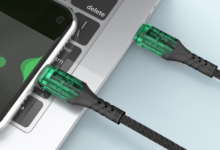Email Hacked? What Can Cyber Attackers Do with Your Email Address?

You may understand the importance of protecting your credit card and bank information from hackers, but you may not worry that much about what they can do with your email address. You may be surprised to know that your email address can give them enough information to cause significant damage. It may seem like a rather ordinary piece of information, but it can be valuable to hackers.
Send you phishing emails
When hackers have your email address, all they need is access to your password. They can easily gain access to it by sending you a phishing email. They may trick you into clicking a link in what appears to be a legitimate email and asking you to confirm your password or other information. A phishing email may say your account has been compromised, and you must change your password for security reasons.
Once hackers have access to your password, they can do much more damage. Attacks are becoming more targeted as hackers receive help from automation. Advanced email security solutions can help to prevent phishing, malware, APTs, BEC attacks etc., with the agility, speed and scale of the cloud.
Spoof your email address to scam other people
Once cybercriminals have access to your email address, they can use it to scam other people. They may create a sender address that looks like yours but make small changes that are hard to spot, such as swapping a letter with a number. They will then send messages that contain malware or requests for money. As the email address looks legitimate, the email bypasses the spam filters found on most email accounts.
For example, attackers may send spoofing emails to unsuspecting users who click on a link and are redirected to a page where malicious code is installed. Their browser credentials may then be stolen.
Send emails to your contacts
If cybercriminals have your email address and login details, they can log in to your account and send emails to people in your contact list. This can help them to get around security measures and advertise fake goods or request access to online accounts. Most savvy internet users will realize when they receive a scam email from a friend’s address, but it could be a problem in some cases where unsuspecting family or friends are subjected to fraud.
Access your online accounts
You probably use your email address to log in to social media sites, online retailers, and so on. You may even use the same password for all these accounts, and once hackers have one password, they can access them all.
Even if you don’t use the same password, clicking the ‘forgot password’ button and using the resulting email which comes to your email address to change the password gives a hacker access to the accounts.
Once they have access to your online accounts, hackers have access to all kinds of personal information. Simply from your LinkedIn account, they can find out where you work, your responsibilities, and who your colleagues are.
Identity theft
With access to your email address and password, hackers can learn enough about you to steal your identity. They may find a social security number, employment records, bank statements, tax records and credit card information in your inbox. The following are just a few of the different forms of identity theft.
- Financial identity theft is a common form where hackers use your financial information to benefit you financially. They may obtain credit, loans etc., in your name.
- Tax-related identity theft is where a criminal files a false tax return with the IRS using a stolen social security number.
- Criminal identity theft involves giving the police stolen identity information, so the victim is charged instead of the thief.
- Medical identity theft is when a hacker steals medical information, like health insurance numbers, so as to receive medical treatment.
- Child identity theft is using a child’s social security number to open bank accounts, apply for government services etc.
When managing a remote team, security is more important than ever. Many remote employees rely on email communications to send sensitive documents and links when they work from home. The risks of impersonation are, therefore, much higher. The prevalence of remote work is also leading to more man-in-the-middle attacks.
Blackmail
The personal information hackers find in your inbox may be the type of information you don’t want to get out. This can lead to an attempt to blackmail you and extort money from you.
Doxxing is a type of digital attack that involves publishing personal information, often in an attempt to get revenge. This may be anything from publishing fairly harmless insults to publishing information that can cause serious repercussions for your family, at work, or in your community, depending on what is revealed. It can take years to recover from damage to your reputation if someone releases sensitive information you don’t want to get out.
Signs that you have been hacked
If you have been hacked, you are likely to notice some of the following signs:
- You try to log in to your email account, but your password no longer works.
- You see withdrawals from your bank account that weren’t made by you.
- You find false charges on your credit report
- Your credit score goes down.
- You don’t receive important mail containing sensitive information.
- You are rejected from a health plan because your medical records reflect a condition you don’t have.
- You receive an IRS notification of a tax return you didn’t file that was filed in your name.
Conclusion
Once a cybercriminal has your email address, they can easily obtain your password and then your personal and financial information could be at risk. Considering the number of online accounts linked to email, you have to act quickly to help minimize the risks to you personally and to those around you. Using the right email security solutions could help you to prevent attacks rather than trying to recover from them.








